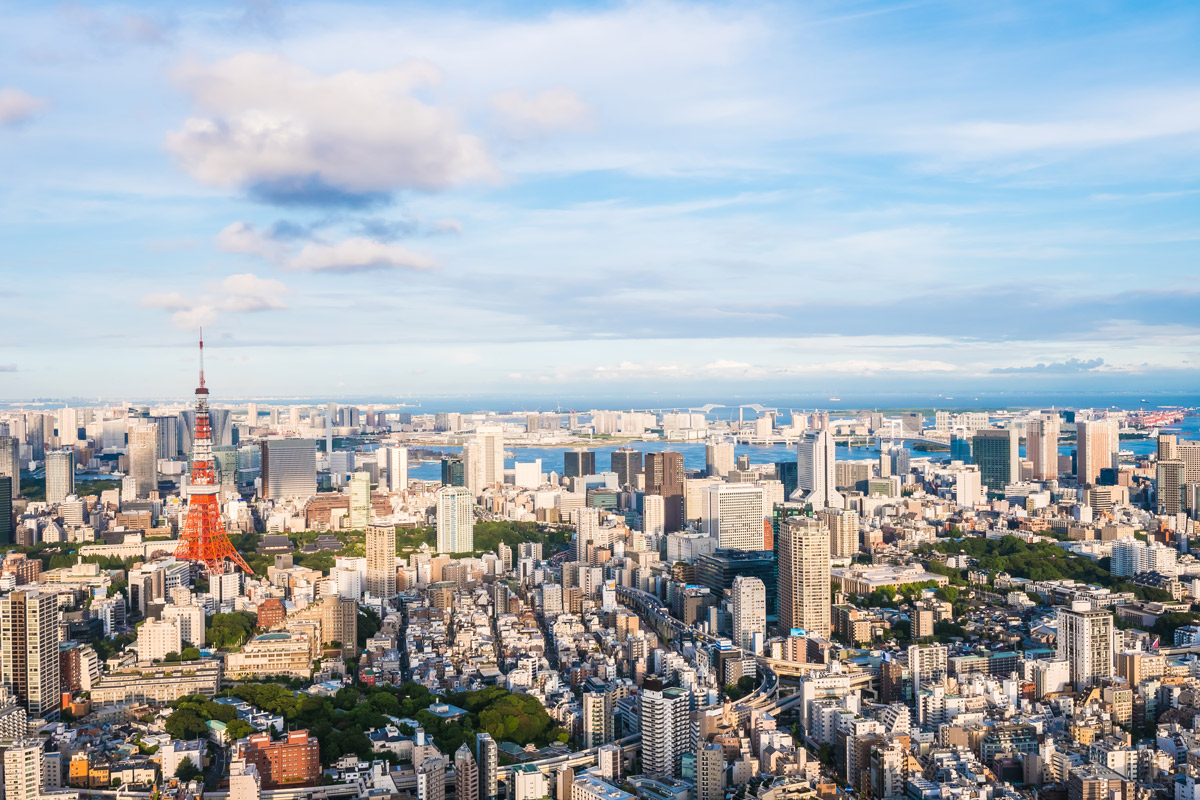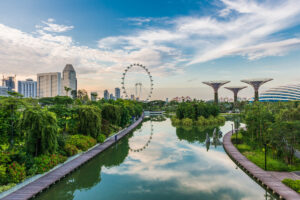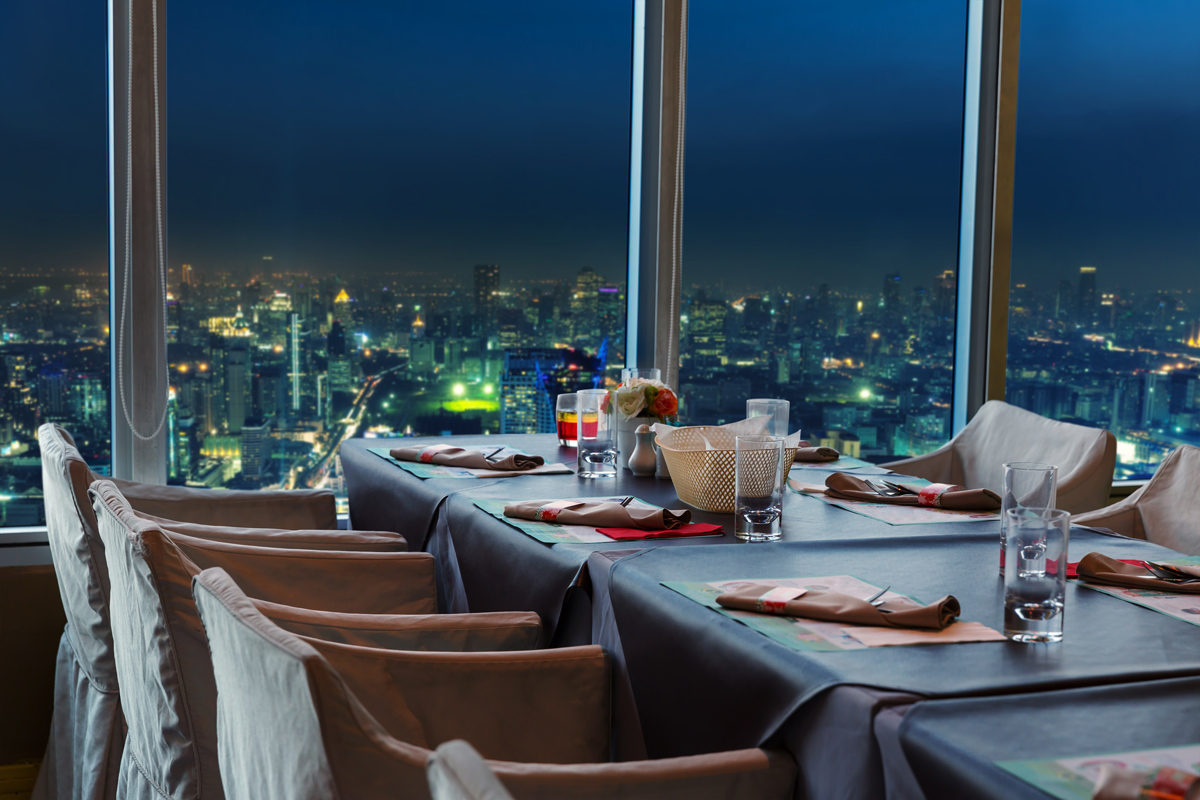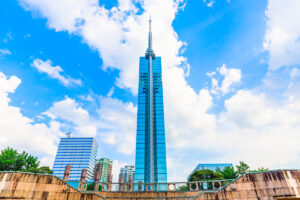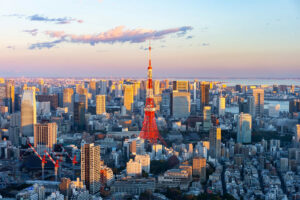Welcome to a journey through Japan, a land where ancient traditions blend seamlessly with modern life. This guide is your ticket to exploring the best cities in Japan, each offering its own unique slice of Japanese culture, history, and cuisine. Japan, a harmonious blend of ancient traditions and cutting-edge innovation, is divided into 9 captivating regions and 47 dynamic prefectures, each boasting its own distinct charm and attractions.
Whether you’re a first-time visitor or a seasoned traveler, these cities provide a diverse range of experiences that showcase the vibrant heart of Japan. Get ready to delve into the bustling streets, serene temples, and hidden gems that make these cities in Japan a must-visit destination. From the bustling metropolis of Tokyo, where towering skyscrapers coexist with historic temples, to the lesser-known gems often overlooked by tourists, Japan’s cities are a testament to the country’s rich history and rapid advancement.
Our curated list of the top 12 cities in Japan will guide you through the heart of this remarkable country. It will take you beyond the well-trodden paths and into the soul of Japan, where every city tells a story, every meal is a celebration, and every moment is steeped in tradition and innovation. So pack your bags and prepare to embark on an unforgettable journey through the land of the rising sun.
- 1. Tokyo: Japan's Dazzling Capital
- 2. Osaka: The Kitchen of Japan
- 3. Kyoto: The Cultural Heart
- 4. Hiroshima: City of Peace
- 5. Nara: Ancient and Tranquil
- 6. Sapporo: Snow and Festivals
- 7. Fukuoka: Dynamic and Diverse
- 8. Kanazawa: Preserved Edo-Era Beauty
- 9. Kobe: Scenic Harbor City
- 10. Yokohama: Cosmopolitan Port City
- 11. Nagoya: A Blend of Past and Present
- 12. Nagasaki
- Frequently Asked Questions
1. Tokyo: Japan’s Dazzling Capital
As the capital of Japan, Tokyo is a bustling metropolis that perfectly blends tradition and modernity.
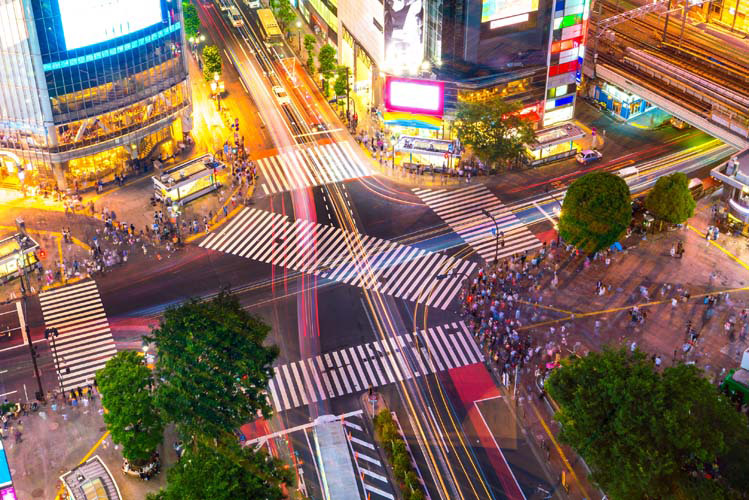
Tokyo, a city where the ultramodern meets centuries-old traditions, offers an unparalleled experience for every traveler. This bustling metropolis, the heart of Japan, is a vibrant blend of history, culture, and innovation. Begin your journey in the neon-lit streets of Akihabara, known as Electric Town, where technology and pop culture fuse in an electrifying atmosphere. Here, amidst the towering skyscrapers, you’ll find everything from the latest gadgets to anime merchandise, making it a paradise for tech enthusiasts and geeks alike. Just a stone’s throw away is the Sensoji Temple, Tokyo’s oldest Buddhist temple, offering a serene contrast to the city’s high-tech vibe. The temple, with its rich history and spiritual ambiance, is a testament to Tokyo’s ability to preserve its heritage amidst rapid modernization.
Not far from here lies the Imperial Palace, a symbol of Japan’s royal history, sitting adjacent to the Museum of Modern Art. This juxtaposition of the ancient and the contemporary is a recurring theme in Tokyo, offering a unique blend of experiences for visitors.
Tokyo also prides itself on its unusual and fascinating tourist attractions. From the quirky Kite Museum to the enchanting Studio Ghibli Museum, there’s no shortage of unique places to explore. The Parasitological Museum adds a peculiar yet intriguing dimension to Tokyo’s diverse array of attractions.
The city’s love for arcade games is palpable in places like the Gigo Sega Building, a gaming haven with multiple floors dedicated to everything from classic arcade games to the latest in virtual reality. One of Tokyo’s most cherished traditions is the viewing of cherry blossoms, or sakura. This beautiful natural spectacle, occurring briefly in spring, transforms the city into a canvas of soft pink hues. Parks and gardens become social hubs, as locals and tourists alike gather under the blossoming trees, a practice deeply ingrained in Japanese culture.
2. Osaka: The Kitchen of Japan
Known for its modern architecture, vibrant nightlife, and hearty street food, Osaka is a city that never sleeps. Don’t forget to visit the iconic Osaka Castle and try the famous Okonomiyaki.

Osaka, often dubbed as Japan’s kitchen, is a city that truly comes alive through its food. This bustling metropolis, with its neon-lit streets and vivacious energy, offers a stark contrast to the serene elegance of Kyoto. In Osaka, the food is not just a part of life; it’s a celebration of life itself. The city’s culinary scene is diverse and expansive, ranging from street food stalls serving up delectable takoyaki (octopus balls) to high-end restaurants offering the finest sushi. The most famous dish here is undoubtedly okonomiyaki, a savory pancake loaded with a variety of ingredients, which is a testament to Osaka’s love for hearty and flavorful food.
Dotonbori, the heart of Osaka’s entertainment district, is a sensory overload with its dazzling array of neon signs and bustling crowds. This area, especially at night, is a spectacle of urban energy, where locals and tourists alike gather to indulge in the city’s culinary delights and lively atmosphere. A visit to Osaka Castle provides a journey back in time. This historic landmark, surrounded by moats and verdant gardens, stands as a proud reminder of Osaka’s storied past. The castle, particularly during cherry blossom season, offers a picturesque setting that beautifully contrasts with the city’s urban landscape. For a panoramic view of Osaka, head to the Umeda Sky Building. The observatory here offers a stunning 360-degree view of the cityscape, showcasing Osaka’s sprawling expanse and its dynamic blend of modernity and tradition.
Osaka’s charm extends beyond its culinary and architectural wonders. The city is a hub of cultural experiences, from traditional puppet theaters and bustling fish markets to contemporary art galleries and live music venues. The people of Osaka are known for their friendly and outgoing nature, adding a warm and welcoming layer to the city’s vibrant character.
Osaka’s unique blend of flavors, sights, and sounds makes it an essential stop on any Japanese itinerary. It’s a city where every street corner reveals a new taste, a new sight, a new experience. In Osaka, the rhythm of the city is dictated by the joy of living, and every visitor is invited to partake in this celebration.
3. Kyoto: The Cultural Heart
If you’re looking for a taste of traditional Japan, Kyoto is the place to be. With its ancient temples, traditional tea houses, and beautiful geisha district, Kyoto is like stepping back in time.
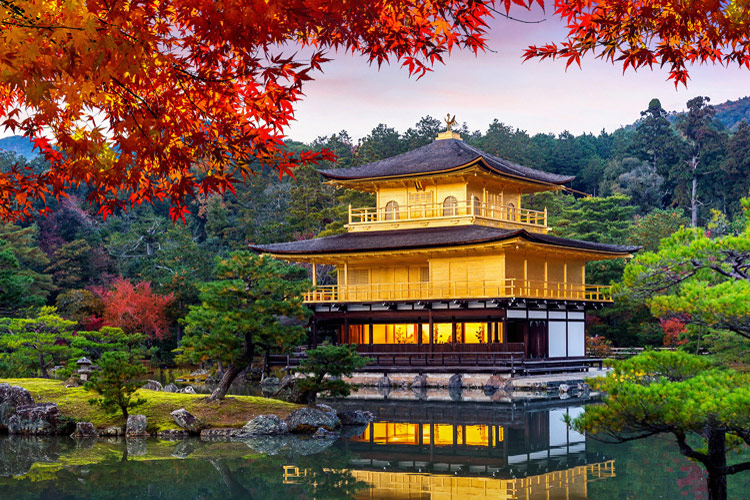
Kyoto, the cultural jewel of Japan, is a city where time slows down and the past comes alive. As the former imperial capital, it is a place deeply rooted in tradition, art, and spirituality. Kyoto’s charm lies in its tranquility, a stark contrast to the bustling energy of Tokyo. In Kyoto, you are greeted by the sight of elegant geishas in colorful kimonos, walking gracefully along the cobbled streets of Gion, the city’s most famous geisha district. The district, with its wooden machiya houses, retains an air of the bygone era, offering a glimpse into the old-world Japan.
The city is home to over 2,000 temples and shrines, each telling its own story of Japan’s rich history and culture. The iconic Fushimi Inari Shrine, with its seemingly endless pathway of vermilion torii gates, offers a spiritual journey up the sacred Mount Inari. This shrine, dedicated to the Shinto god of rice, is a place of reflection and peace. Another jewel in Kyoto’s crown is the Kinkaku-ji, or the Golden Pavilion. Set against a backdrop of lush greenery and reflected in a mirror-like pond, it’s a stunning example of Japanese garden design and architecture.
Kyoto also celebrates the beauty of nature. The Arashiyama Bamboo Grove, a pathway surrounded by towering bamboo, creates an otherworldly and serene experience. It’s a place where you can immerse yourself in the sounds and sights of nature, away from the city’s hustle and bustle. No visit to Kyoto is complete without experiencing its traditional tea houses. These are places where the art of the Japanese tea ceremony is practiced with utmost precision and respect. Each movement and gesture in the tea ceremony is a form of meditation, reflecting the principles of harmony, respect, purity, and tranquility.
During spring, Kyoto transforms into a wonderland of cherry blossoms. The Philosopher’s Path, a stone path lined with hundreds of cherry trees, becomes a popular spot for hanami, the traditional cherry blossom viewing. The beauty of sakura in full bloom, coupled with the city’s historic backdrop, creates a mesmerizing spectacle. Kyoto’s legacy as the cultural heart of Japan is evident in its preservation of arts, crafts, and traditions. It’s a city where the spirit of old Japan is not just maintained but celebrated with every temple, garden, and festival. A visit to Kyoto is a journey through the living history, an experience that stays with you long after you leave.
4. Hiroshima: City of Peace
Known for its poignant Peace Memorial Park and A-Bomb Dome, Hiroshima is a city that symbolizes resilience and peace, set against the backdrop of beautiful Miyajima Island.

Hiroshima, a city marked by its history, stands today as a beacon of peace and hope. Known globally for the tragic atomic bombing during World War II, Hiroshima has transformed its past into a powerful message of peace and resilience. The city’s ability to rebuild and renew itself is nothing short of inspirational.
The Hiroshima Peace Memorial Park is a poignant reminder of the past and a symbol of the city’s commitment to peace. Within the park, the Hiroshima Peace Memorial Museum provides a deeply moving and educational experience, detailing the events of the bombing and its aftermath. The Atomic Bomb Dome, preserved in its post-bombing state, stands as a haunting but necessary reminder of the destructive power of nuclear weapons and the importance of peace. Beyond its historical significance, Hiroshima offers a rich cultural and natural landscape. A short ferry ride from the city is Miyajima Island, known for the iconic Itsukushima Shrine and its “floating” torii gate. This beautiful island, with its lush forests and tranquil waters, provides a serene escape from the city and a chance to connect with Japan’s spiritual and natural beauty.
Hiroshima’s culinary scene is also noteworthy, particularly for its Hiroshima-style okonomiyaki, a layered pancake that is a local specialty. The city’s vibrant downtown area offers a variety of dining options, from traditional Japanese cuisine to international flavors, catering to every palate.
Despite its painful history, Hiroshima is a city full of life, beauty, and optimism. The friendly nature of its people and the city’s commitment to peace and harmony make it a unique and meaningful destination for travelers from around the world. Hiroshima is not just a city to visit; it’s a place to reflect, learn, and be inspired.
5. Nara: Ancient and Tranquil
Home to the friendly deer of Nara Park, the magnificent Todai-ji Temple, and rich in ancient Japanese history and culture.

Nara, often overshadowed by its more famous neighbor Kyoto, is a city steeped in Japan’s earliest history and cultural heritage. As the first permanent capital of Japan, Nara holds a special place in the Japanese heart and history, offering a more relaxed and intimate experience compared to the larger tourist destinations. The city’s most iconic residents are the hundreds of free-roaming deer in Nara Park. These friendly deer add a unique charm to the city’s already serene atmosphere. Visitors can feed and interact with these gentle creatures, creating a memorable experience.
At the heart of Nara Park is Todai-ji Temple, a UNESCO World Heritage Site. This temple houses the Great Buddha (Daibutsu), a colossal bronze statue that is one of the largest in the world. The temple’s grandeur and the tranquil surroundings make it a must-visit site for anyone interested in Japan’s religious and architectural history. Another significant shrine, Kasuga Taisha, is famous for its hundreds of bronze and stone lanterns that line the pathways. During the Lantern Festivals in February and August, these lanterns are lit up, creating an ethereal and magical atmosphere that transports visitors to another time.
Apart from its historical sites, Nara is also known for its traditional crafts and local cuisine. The city’s quaint streets are filled with shops selling Nara’s famed calligraphy brushes and elegant kimonos. Local food specialties, such as kakinoha sushi (sushi wrapped in persimmon leaves) and mochi (rice cakes), offer a taste of the region’s culinary delights.
Nara’s charm lies in its peaceful ambiance and the feeling of stepping back into a time where history is preserved and revered. The city’s rich cultural heritage, combined with its natural beauty, makes it a tranquil oasis and a perfect day trip for those seeking a quieter, more reflective experience of Japan.
6. Sapporo: Snow and Festivals
A winter wonderland famous for its Snow Festival, this city is a haven for seafood lovers and hosts the renowned Sapporo Beer Museum.
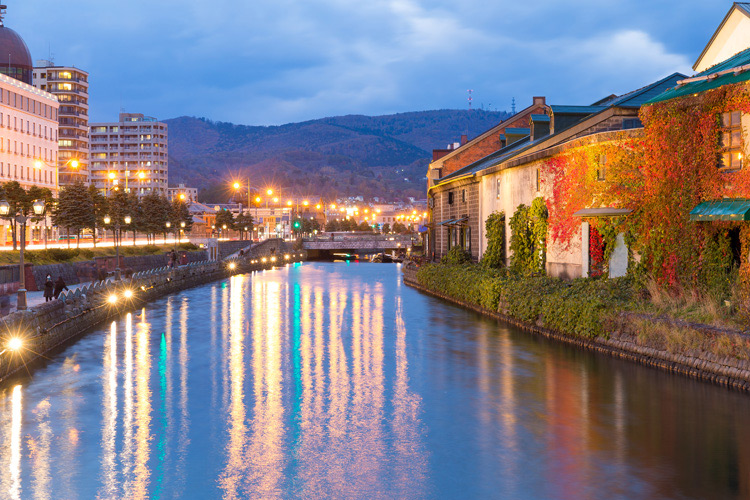
Sapporo, the capital city of Hokkaido, Japan’s northernmost island, presents a delightful contrast to the country’s more traditional destinations. Renowned for its annual Snow Festival, Sapporo is a winter lover’s paradise, offering a blend of stunning snowy landscapes and vibrant city life. In winter, Sapporo transforms into a magical snowy wonderland, hosting the famous Sapporo Snow Festival. This festival draws visitors worldwide to witness enormous and intricately carved ice sculptures that light up the night. The city becomes a canvas for artists who turn snow and ice into breathtaking works of art.
But Sapporo is not just about its winter charm. Throughout the year, it offers a plethora of experiences. The city is a haven for food enthusiasts, particularly known for its fresh seafood and the iconic Sapporo ramen, served in a miso-based broth, a local specialty that warms you up during the chilly weather. The Sapporo Beer Museum, dedicated to Japan’s oldest beer brand, offers a journey through the history of beer in Japan, complete with tastings.
For nature lovers, the surrounding areas of Sapporo are a must-explore. The nearby mountains provide excellent opportunities for hiking in summer and skiing in winter. Mount Moiwa, accessible by a ropeway, offers a panoramic view of the city, especially enchanting at night. During the warmer months, Odori Park, in the heart of the city, becomes a lively spot for locals and tourists. The park, stretching across 13 blocks, is a green oasis amidst the urban landscape, hosting numerous events and festivals throughout the year.
Sapporo’s urban layout, designed based on a grid system, makes it a uniquely navigable city in Japan. The city’s architecture, from the historic Clock Tower to the modern JR Tower, reflects its blend of past and present. The charm of Sapporo lies in its ability to offer a vibrant city life, set against the backdrop of Hokkaido’s stunning natural beauty. Whether you’re visiting for its snowy spectacle or its culinary delights, Sapporo provides a unique and unforgettable Japanese experience.
7. Fukuoka: Dynamic and Diverse
A vibrant city known for its bustling food stalls serving Hakata ramen, along with historical sites like the ancient Kushida Shrine.

Fukuoka, a dynamic city on the northern shore of Japan’s Kyushu Island, offers a rich tapestry of urban excitement and serene nature. Known for its ancient temples, modern shopping malls, and bustling food stalls, Fukuoka seamlessly blends tradition with modernity. As you explore the city, the vibrant atmosphere of Nakasu, Fukuoka’s entertainment district, is captivating. This area comes alive at night with its yatai (street food stalls), where you can savor local delicacies like Hakata ramen, known for its rich tonkotsu (pork bone) broth, and mentaiko (spicy cod roe), a Fukuoka specialty.
Fukuoka’s historical side is just as compelling. The Kushida Shrine, a Shinto shrine established in 757, is a serene retreat in the heart of the city. This shrine, known for its elaborate float races during the Hakata Gion Yamakasa festival, is steeped in history and local culture.
For a taste of nature, Ohori Park, with its expansive pond and walking paths, offers a peaceful respite from the urban hustle. The park, inspired by classical Chinese gardens, is a perfect spot for leisurely strolls or picnics under the cherry blossoms in spring.
Another highlight is Fukuoka Castle, a reminder of the city’s feudal past. Though only a few ruins remain, the castle grounds transform into a splendid viewing spot for cherry blossoms, drawing visitors from all over. Fukuoka is not just a destination; it’s an experience that encapsulates the spirit of Japan’s diversity. From its ancient shrines and natural beauty to its lively streets and culinary scene, Fukuoka is a city that invites exploration and leaves a lasting impression.
8. Kanazawa: Preserved Edo-Era Beauty
Preserving the charm of old Japan with attractions like the beautiful Kenrokuen Garden and historical districts that harken back to the Edo period.
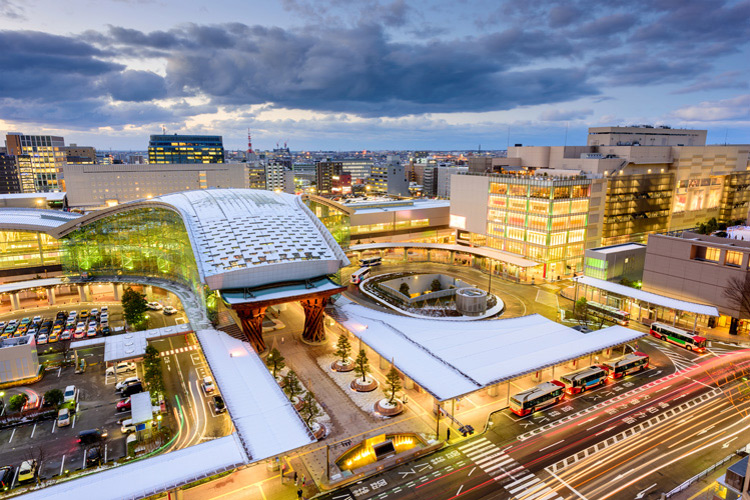
Kanazawa, often referred to as a smaller, more accessible Kyoto, is a city where the charm of old Japan is beautifully preserved. Nestled next to the Sea of Japan in the Ishikawa Prefecture, this city is a treasure trove of cultural heritage, historic neighborhoods, and exquisite gardens. One of Kanazawa’s most renowned attractions is the Kenrokuen Garden, considered one of the three great gardens of Japan. This stunningly landscaped garden, known for its perfect harmony and traditional beauty, offers a peaceful escape with its streams, ponds, and seasonal flowers.
The city’s historical districts, such as the Higashi Chaya District, are a window into Japan’s past. Here, the well-preserved teahouses and narrow lanes evoke the Edo period’s atmosphere, providing a glimpse into the lifestyle of geishas and samurai. Visitors can explore these districts to experience traditional crafts like gold leaf gilding, a craft Kanazawa is famous for.
Kanazawa Castle, another highlight, adds to the city’s historic charm. Though partially reconstructed, the castle’s architecture and its surrounding park are a testament to the city’s feudal past and its enduring cultural significance. The city also boasts a vibrant arts scene, exemplified by the 21st Century Museum of Contemporary Art. This museum, known for its innovative design and interactive exhibits, reflects Kanazawa’s blend of the traditional and the modern.
Kanazawa’s culinary scene is as rich as its culture. The city is known for its high-quality seafood, particularly sushi and sashimi, thanks to its proximity to the Sea of Japan. Additionally, Kaga cuisine, a style of cooking native to the region, offers a unique and refined taste of the local culture. Kanazawa, with its blend of historical elegance and contemporary culture, is a must-visit for those looking to experience the quieter, more intimate side of Japan. The city’s ability to maintain its historical integrity while embracing modernity makes it a uniquely charming destination.
9. Kobe: Scenic Harbor City
Famous for its exquisite Kobe beef, this scenic city is beautifully set between mountains and the sea, offering a rich blend of natural beauty and urban sophistication.
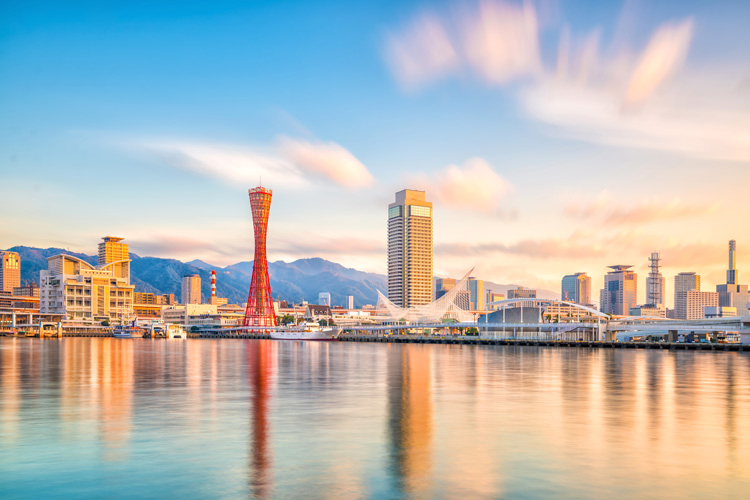
Kobe, nestled between the Rokko mountain range and the waters of Osaka Bay, is a city known for its scenic beauty, cultural diversity, and culinary excellence. This cosmopolitan port city, with its unique blend of Japanese and foreign influences, offers a distinct experience that sets it apart from other Japanese cities. One of Kobe’s most famous contributions to global cuisine is Kobe beef, known for its flavor, tenderness, and well-marbled texture. Dining in Kobe offers a chance to experience this world-renowned delicacy at its source. The city’s culinary scene, however, is not limited to its beef; it also offers a variety of international and traditional Japanese cuisines, a testament to its history as a port open to foreign influence.
Kobe’s cultural landscape is as diverse as its culinary offerings. The Ikuta Shrine, one of the oldest Shinto shrines in Japan, stands in stark contrast to the modern architecture and urban layout of the city. Kobe also houses the Kobe Earthquake Memorial Museum, which pays tribute to the resilience of the city and its people following the devastating 1995 Great Hanshin Earthquake. Nature lovers will find solace in the serene surroundings of the Nunobiki Herb Garden and the panoramic views from the top of Mount Rokko. The Nunobiki Falls, located just behind the city, offer a picturesque hiking trail leading to one of Japan’s most celebrated natural landmarks.
Kobe’s waterfront area, Meriken Park, showcases the city’s modern side with its contemporary art installations, the iconic Kobe Port Tower, and the maritime museum. The park is a popular spot for both locals and tourists, providing spectacular views of the bay, especially at night.
The city’s vibrant atmosphere is further highlighted in the Nankinmachi district, Kobe’s own Chinatown, known for its lively streets, colorful shops, and diverse range of street food. In Kobe, the harmonious blend of natural beauty, rich history, diverse culture, and culinary delights creates an environment that is both exciting and comforting. Whether exploring its scenic landscapes, delving into its cultural heritage, or indulging in its gastronomic pleasures, Kobe offers a unique and memorable experience for every visitor.
10. Yokohama: Cosmopolitan Port City
A cosmopolitan port city with a unique blend of Japanese and international influences, featuring a lively Chinatown and beautiful waterfront areas.

Yokohama, Japan’s second-largest city, sits just south of Tokyo, offering a fascinating blend of modern sophistication and rich cultural heritage. As one of the first Japanese ports opened to foreign trade, it exudes an international flair, reflected in its diverse architecture, cuisine, and cultural offerings.
The city’s waterfront area, Minato Mirai 21, symbolizes its modernity. This futuristic district features landmark buildings, shopping malls, and an amusement park, all set against the backdrop of Yokohama’s bustling port. The Landmark Tower, Japan’s second tallest building, offers breathtaking views of Mount Fuji and the surrounding bay area from its observation deck. Yokohama’s Chinatown, the largest in Japan, is a vibrant and colorful district where visitors can indulge in authentic Chinese cuisine and explore unique shops and temples. The energy and variety found here are a testament to Yokohama’s cosmopolitan nature.
For a touch of nature and tranquility, the Sankeien Garden, a traditional Japanese garden, provides a serene escape with its historic buildings, ponds, and seasonal flowers. It’s a place where the beauty of Japanese landscape design can be fully appreciated. Yokohama also has a rich maritime history, evident in the Yokohama Maritime Museum and the historic ship Nippon Maru. The city’s connection to the sea is a core part of its identity, adding another layer to its diverse character.
In addition to these attractions, Yokohama’s cultural scene is vibrant, with numerous art galleries, jazz clubs, and theaters, reflecting its status as a city that embraces both the arts and its multicultural roots. Whether you’re exploring its modern attractions, delving into its international districts, or relaxing in its beautiful parks, Yokohama offers a unique and enriching experience, combining the best of urban living with cultural depth and scenic beauty.
11. Nagoya: A Blend of Past and Present
A city where history meets modernity, boasting the grand Nagoya Castle and a reputation as a center for technological and industrial innovation.
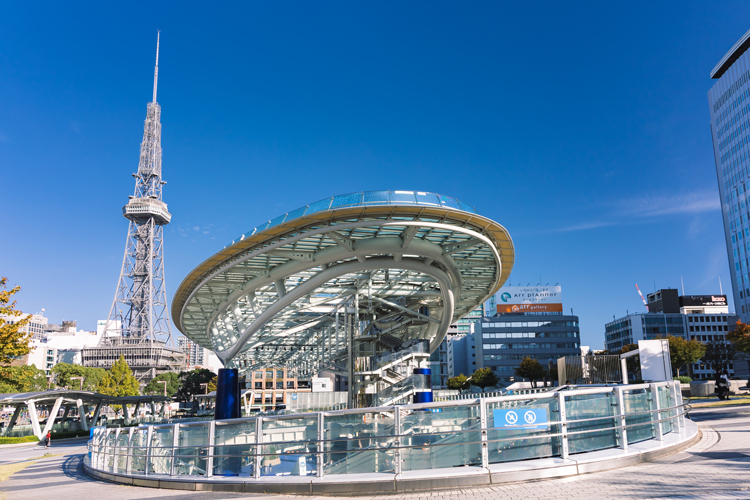
Nagoya, Japan’s fourth-largest city, is a compelling mix of historical significance and contemporary appeal. Located in the heart of the Aichi Prefecture, this city is often regarded as the gateway to the Japanese Alps and Ise Shrine, making it a pivotal location for both travel and commerce.
At the center of Nagoya’s historical narrative is the majestic Nagoya Castle. Originally built in the 17th century, the castle is a symbol of the city’s strength and resilience, having been reconstructed after World War II. The castle’s towering structure and golden shachihoko (tiger-headed carps) are iconic, offering insights into Japan’s feudal past and architectural ingenuity. Nagoya is also a hub for technological advancement and industry, home to some of Japan’s most influential companies, including Toyota. The Toyota Commemorative Museum of Industry and Technology is a fascinating visit for those interested in the evolution of automobile and textile machinery.
For a taste of traditional Nagoya, one must try the local cuisine, notably hitsumabushi (grilled eel on rice), kishimen (flat udon noodles), and Nagoya Cochin (a local chicken breed). The city’s culinary scene wonderfully encapsulates the blend of tradition and innovation that defines Nagoya. Cultural experiences in Nagoya are plentiful, with attractions like the Atsuta Shrine, one of the most important Shinto shrines in Japan, and the Tokugawa Art Museum, housing a collection of samurai artifacts and historical treasures.
Nagoya’s blend of historical depth, industrial prowess, and cultural richness makes it a fascinating destination for travelers seeking a comprehensive experience of Japan’s diverse facets. From exploring ancient castles and shrines to indulging in innovative cuisine and discovering industrial marvels, Nagoya offers a rich tapestry of experiences.
12. Nagasaki
A city with a poignant history and a unique blend of Eastern and Western influences, known for its historical sites related to the atomic bombing and a diverse cultural heritage.

Nagasaki, a city with a rich history and cultural diversity, offers a unique blend of Japanese, Chinese, and Western influences. As Japan’s early gateway to the West, Nagasaki’s districts are adorned with European-style homes and a significant Christian population. The city’s international flair is also reflected in its cuisine.
Nagasaki Shippoku, a fusion of Japanese, Chinese, and Western cuisine, is a must-try. The city is also known for its Nagasaki Chanpon, a flavorful noodle soup with variations including pork, vegetable, and seafood. For dessert, indulge in Castella Sponge Cake, a Portuguese-inspired fluffy and moist cake with a golden brown surface, sweet aroma, and rich taste.
The city is not just about food. It offers a plethora of attractions for history buffs and nature lovers alike. The Nagasaki Atomic Bomb Museum and Peace Park provide a sobering look at the city’s past. For a breathtaking view, take a trip up Mount Inasa, renowned for its stunning night views.
For a unique experience, visit Gunkanjima, an abandoned coal mining island, now a haunting tourist attraction. Nagasaki’s beautiful beaches and the crystal-clear seas surrounding the Goto Islands are perfect for swimmers, divers, and sea kayakers. Whether you’re a foodie, history enthusiast, or nature lover, Nagasaki promises an unforgettable journey.

